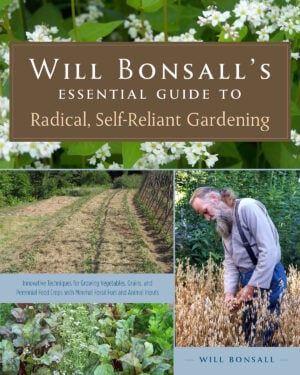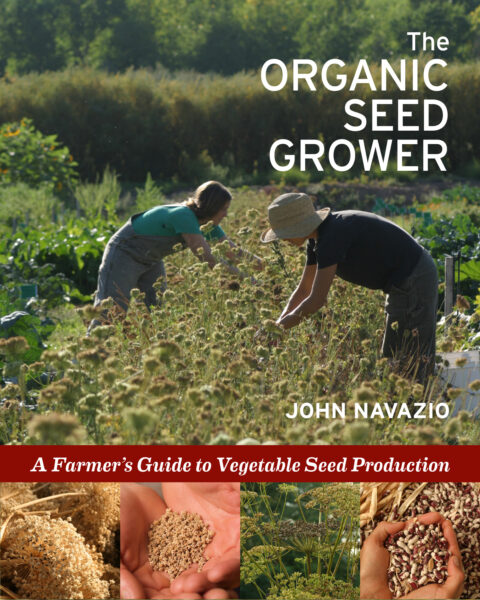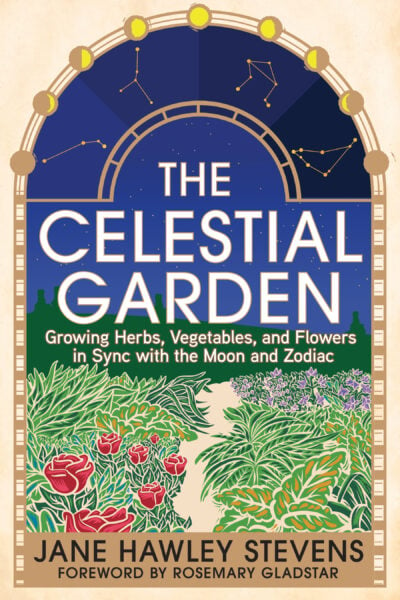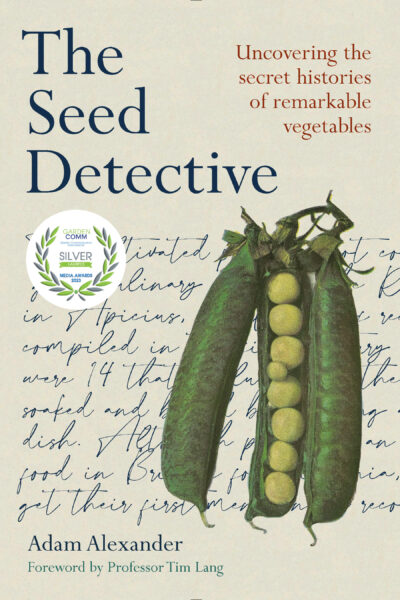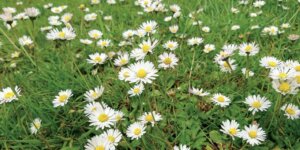Saving Dry vs. Wet Seeds: The Seed Series
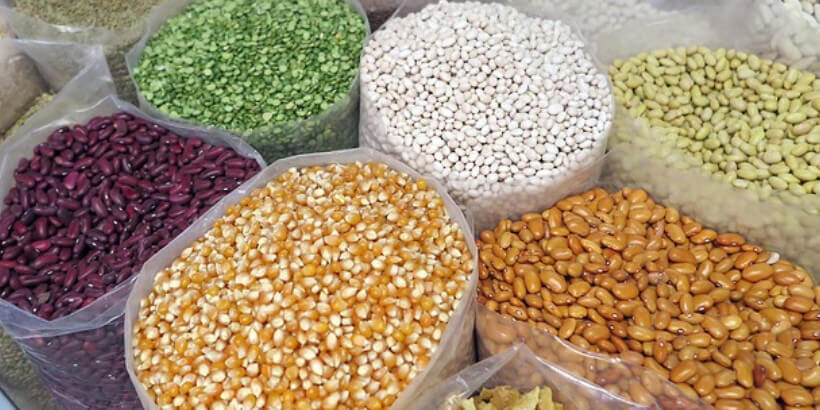
Interested in seed saving? Before getting started, it’s important to know the difference between storing wet seeds and dry ones.
The following excerpt is from Will Bonsall’s Essential Guide to Radical, Self-Reliant Gardening by Will Bonsall. It has been adapted for the web.
(Unless otherwise noted, all photography courtesy of Will Bonsall.)
Dry vs. Wet Seeds: Collecting and Storing Seeds
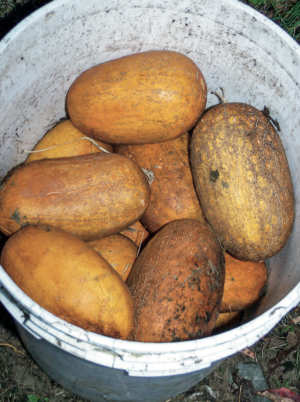
Figure 6.12. If they’re brought indoors before hard freezes, cucumbers can continue to after-ripen for a few weeks before processing to improve quality.
The most frequently asked seed-saving question is: How can I tell when seed is mature enough? Very important, since immature seeds will not store well, nor will they germinate.
We must remember that “maturity” for our purposes means that the seed germ has developed fully; the seed may appear full-sized but still be succulent and underdeveloped (leek seed is an example).
Seed-Saving Tips
Frequently in seed saving you cannot have your cake and eat it, too—you get seed or food, not both. However there are several exceptions.
For example, cukes (cucumbers) and zucchinis are eaten in the immature stage, and those you wish to save for seed must be left to ripen way beyond usefulness as food.
On the other hand winter squash and pumpkins are eaten at full maturity anyway, so your seed squash are also food squash and vice versa (provided you’ve kept them pure).
In fact the quality of squash seed improves with storage in the fruit—after-ripening, it’s called— so it’s best if you don’t process them all at harvest, but scoop out and save the seed of each fruit as you use it.
At some point however, depending on variety, seeds may start to sprout inside the intact fruit.
Working with Dry Seeds
Seeds are sometimes classified according to their processing method: wet or dry. Most are dry and are processed by a combination of methods called threshing and winnowing. For these seeds their degree of dryness is a measure of their maturity.
You can purchase devices for measuring the seeds’ moisture content, but for our purposes it’s easy to determine well enough by following this basic rule of thumb: Are the seed and its surroundings (pod, bract, et cetera) brittle and crumbly?
Measuring Moisture Content
For example, do the pods crack rather than bend like leather? Does all the trash crumble into dust and stuff that can be blown away? If not, leave the plants until they are fully mature. If rain wets them let them dry out again.
If frost threatens and you’re not certain whether the bean seeds are ready (unlike pea seeds, damp beans can be ruined by heavy frost), then you must make a decision: Can you cover the plants to protect them through that frost or should you harvest them, even though the pods are a bit leathery?
If you opt for the latter, it’s better to pull the entire plants, roots and all, rather than pick pods. The seeds may be able to draw a little more life force from the parent plant, just enough to finish their ripening.
Next time plant earlier or use some season-expanding strategy, so you will not have this concern.
Managing Mature Seeds
What about overmature? In general overmature is a meaningless term, like jumbo shrimp or modern art. If seed is mature it is just mature, that’s all.
However there are concerns lest it should shatter onto the ground, a real issue with brassicas and parsnip, or be eaten by birds, particularly composites like salsify and sunflower.
And if seed stalks sprawl over so that the seeds or pods are on the wet ground, they may either rot or sprout. But the seed itself cannot get “too ripe.”
Avoiding Potential Problems
I’ve developed several strategies for avoiding the above-mentioned problems. When I notice brassica seed stalks that have reached the shatter-prone stage, I leave them alone until the next morning.
The seed is no less mature then, but the pods will have taken up a slight dampness during the night hours and can be handled with little or no loss.
I collect them by stripping the pods from the stalks into a large paper bag or even just clipping off the whole stalks or plants if they’re not too badly tangled. I leave this bag opened to the air until the pods are as dry as they were the previous afternoon and then proceed to process them.
When salsify seed is ripening I cover individual heads with scraps of gauze, but only after pollination is long over. In extreme cases of persistent wet weather I have covered plants with some sort of canopy, but that’s very rare; what gets wet will dry out again.
Working with Wet Seeds
The “wet” seed crops, those that hold the seed within a succulent fruit, like tomatoes, peppers, squash, and cukes, require a somewhat different approach. For each of these fruits there are slightly different clues to determine when seeds have reached maturity.
Tomatoes and Peppers
A tomato should be ripe enough for eating or, better yet, overripe to the point where you might hurl it at an inept performer or political opponent. Very rarely will a fruit ripen so much that the seed sprouts within it.
Despite what I said earlier about underripe seed, tomatoes and peppers are somewhat more forgiving. I have regularly harvested green tomatoes, full-sized and shiny but green nonetheless, and ripened them in a sunny window, at which point the germ was fully developed.
Likewise peppers: Ideally peppers should have turned their mature colour (usually red, but sometimes yellow or chocolate brown) on the plant, but again, I have been forced by early frost to pick them green or half green and after-ripen indoors, quite successfully.
Cucumbers and Zucchini
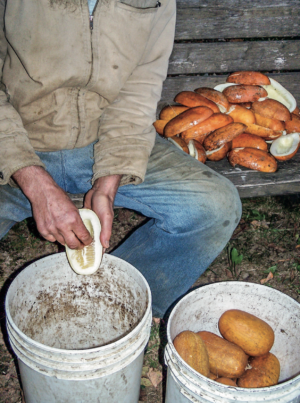
Figure 6.13. Scrape the innards of cucumbers into a bucket or other container in which you can ferment the seeds. Photograph courtesy of Joe Hodgkins.
As for cucurbits obviously a cucumber or summer squash at the eating stage is useless for seed. The cuke must be left to become a deep yellow-orange blimp or better yet brown and netted like a melon.
As for zucchini you know those giant inedible prizewinners at the fair? You get the picture.
With cukes and tomatoes you have a clingy goo that consists of amniotic sacs, much like frogs’ eggs in function and appearance.
You could simply spread the whole business out on a rack or paper towel and it will eventually dry, but that would be a huge mistake.
Retaining Moisture: Negative or Positive?
You see, that gelid stuff is designed to retain moisture, which is very helpful for seeds that are expected to germinate in the short term but not for seeds that may need to remain dormant in the packet for several years.
It also provides an ideal medium for the growth of various disease spores, such as the fungus that causes damping off in seedlings. Hmm! Might just be a good idea to get rid of that stuff, but how?
Letting Fermentation Do the Work
It turns out that goo is easily broken down by a brief fermentation, which not only doesn’t harm the seed but actually leaves the seed coat impregnated with lots of antibiotic and probiotic stuff that actually protects the seed from those bad cooties. How simpatico!
Marketplace seed is usually de-gelled by exposing the seed to a solution of hydrochloric acid. That sterilizes the seed coats but destroys all that probiotic benefit. The marketplace doesn’t have time to let nature take its course, but perhaps you do.
How much time does it take to ferment seeds to the right point? A few days; some say until traces of mould dot the surface, others say when fruit flies start to take note; I say when your significant other yells at you to “Get that stuff out of here!”; that’s a pretty reliable indicator.
Managing the Seed Mixture
When your mixture reaches that critical point take the bowl or cup of ugly glop and put it in a glass jar along with several times that volume of water. (I occasionally grow cuke seed commercially, in which case I use 5-gallon plastic, or 18.9 l, pails.)
Stir the mix well, breaking up lumps with your pinkies—yes, your hands will smell gross, but it goes away in a few weeks. If you prefer, use a long-handled spoon.
As it swirls around in the jar you’ll notice some stuff swirling around to the bottom and other stuff swirling around to the top.
Floating Seed
The bottom stuff is mainly plump seed with some of the denser pulp following it, especially bits of pulp attached to seed. The top scum is mostly gas-filled pulpy fibre. If there are seeds mixed with the floating crud, either they are attached to some lightweight pulp or the seeds themselves are no good, filled with buoyant gas; no loss there.
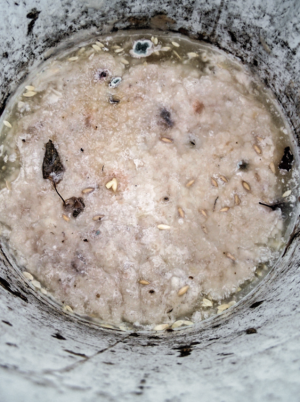
Figure 6.14. This bucketful of fermented cucumber seed is just gross enough to be processed.
Especially with cucumbers I always have lots of floating seed; it is alarming to see such nice plump-looking seed getting poured off with the scum.
If you need reassurance save some out and dry it separately: See how it shrinks to hollow hulls that blow away at a puff. The plumpness, like a baby’s smile, was the result of gas.
Finishing the Fermentation Process
Don’t be fanatic with this first decantation; be satisfied with pouring off half of the cruddy slurry. Then repeat the process again and again; each time the cruddy liquid will become thinner and clearer and the good seed will sink faster (it was slightly buoyed up before by the denser dirty water).
When the water is clean enough to suit you, put the seed in a strainer and give it a last cold rinse before spreading it out on a tray or screen to dry.
Storing Different Types of Seeds
Allow several days to be on the safe side. As with any seeds too long is better than not long enough, provided they’re safe from mice. The fuzzy tomato seeds will form clumps that are easily “singulated” by rubbing between your palms.
Cucumber seeds will retain a dry residual film that is easily sloughed off and blown away, but beware: The seed ends can jab your palms nastily if you rub them hard. Same with melons, although they do not need to be fermented, nor do dry-processed squash or peppers.
As with tomatoes and peppers the ripe seeds of cucurbits continue to draw some life force from the placenta. Even though the squash fruits may be fully mature at harvest, the seed is further improved if you leave it in the fruit in storage for several weeks before scooping out the seeds.
Recommended Reads
Recent Articles
Everyone loves a refreshing, fermented, nutritious drink…even your garden! Take your fermentation skills out of the kitchen and into the garden by brewing fermented plant juice. The following is an excerpt from The Regenerative Grower’s Guide to Garden Amendments by Nigel Palmer. It has been adapted for the web. How to Make Fermented Plant Juice Fermented…
Read MoreWant to see your crops thrive this upcoming growing season? The key is in soil fertility and health. Spend time maintaining your soil’s health to guarantee bigger and better crops come harvest time! The following is an excerpt from No-Till Intensive Vegetable Culture by Bryan O’Hara. It has been adapted for the web. What Is Soil Fertility?…
Read MoreMany know the effects of catnip on our feline friends, but few realize that catnip has medicinal effects for humans. From stomach aches to reducing fevers, catnip is a versatile herb with many benefits. The next time you grow this plant for your cat you may end up taking a few cuttings for yourself! The…
Read MoreIt’s time to take control of your seeds and become a plant breeder! Saving your seed allows you to grow and best traditional & regional varieties, and develop more of your own. The following excerpt is from Breed Your Own Vegetable Varieties by Carol Deppe. It has been adapted for the web. Becoming A Plant…
Read MoreRewilding is one of the best things you can do for the biodiversity of your farm or garden. By no longer mowing your lawn, flowers will start to grow, creating a meadow and a habitat for creatures that often get forgotten. The following is an excerpt from The Healthy Vegetable Garden by Sally Morgan. It…
Read More

